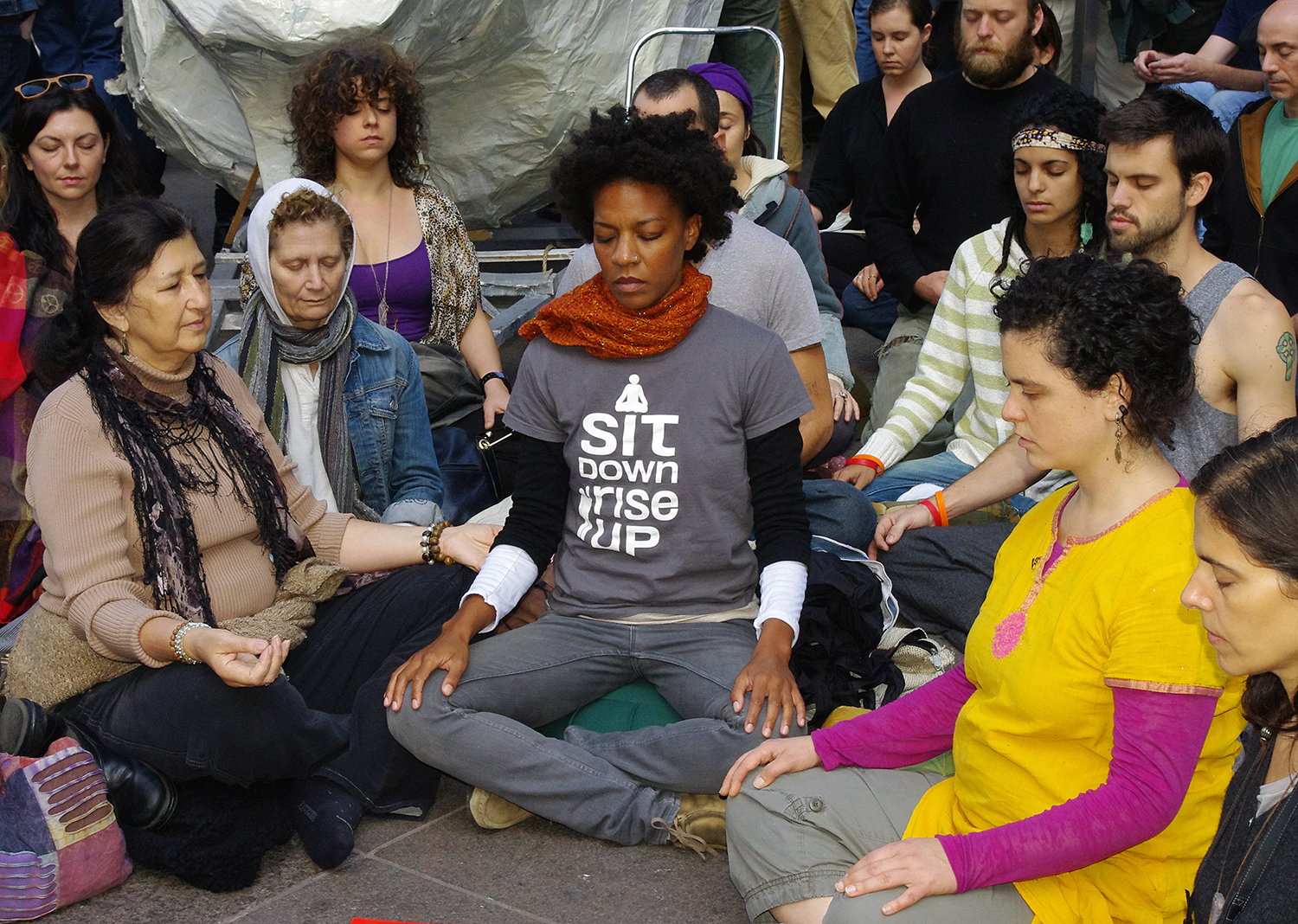“Who am I?” I wondered, as 20 strangers closed their eyes and settled into chairs.
I knew who they were: socialists, my people — skeptical of capitalism; deeply disappointed by racism, sexism, and climate change; knowing there has to a better way to organize society.
But here I am teaching meditation instead of debating Marxism and the shortcomings of the Democratic Party.
As I began — ”find a posture halfway between relaxed and alert” — my stomach tied itself into a knot. I tried to breathe normally but my shoulders were shaking, making my voice sound higher.
I had spent the hour before denying I was a nervous wreck. Who tells socialists to care about themselves?
“Liberal.” “Bougie.” “Social justice warrior.” I could hear the call outs in my mind like they were tweets about a New York Times op-ed.
Thank God meditation teaches a response for anxiety and other overwhelming emotions.
Simply put: open to them.
Emotions are attached to stories, i.e., thoughts about the past or future. We usually either indulge the stories or run away from them. We follow them away from the present moment or distract ourselves with social media, alcohol, name your favorite distraction.
When you notice unhelpful stories, accept that they’re just what’s happening right now. They are real but not necessarily true. Let them go with the mind’s attention. Then, open to the present moment, to all it’s sights, smells, tastes, sounds, and feelings.
When we’re lost in thought, we close off to the rest of our experience, particularly if we’re overwhelmed.
“When we are stressed, our attention narrows and fixates, often into obsessive thinking, worry, and judgment,” writes meditation teacher Tara Brach.
This closing off shows up in the body as a clench — in the stomach, shoulders, hands, etc. — as if we’re bracing for something bad just around the corner.
Opening is allowing the tightness to just be and then feeling its raw sensations, it’s warmth, tingling, or pain — whatever it feels like.
Feeling emotions without coming up with stories to explain them takes some wind out of their sails. It lowers the emotional charge. It allows you to calm the body, putting you back in touch with your surroundings.
As soon as I didn’t see the knot in my stomach as a problem, it relaxed. I felt its serpentine grip loosen. I breathed deeply, feeling cool air fill the bottoms of my lungs. I started feeling like myself, who I always am no matter the circumstances, whomever I’m around.
Being mindful isn’t just about focusing more or directing your attention. It’s also about relaxing your attention so that you’re witnessing thoughts and emotions rather than being lost inside of them, whipped around by their every whim.
It’s about opening, allowing, and receiving — which enables you to respond rather than react to whatever or whomever you encounter.
Want to be more mindful?
I’ve come up with a cheat sheet to help you start and stick with a regular meditation practice. Get it for free here.
Meditation for the 99%
On Meditation for the 99%, I take meditation out of faraway monasteries, expensive retreat centers, and Corporate America, and bring it to work, relationships, and, especially, politics. Listen everywhere podcasts are available.
Photo credit: David Shankbone
